
Cherry Hill Elementary, Mission, BC
Grant term 2022-2024
At Cherry Hill Elementary School, an amazing initiative has taken root, bringing about a big change in the way our students perceive food and nutrition. With a student body of approximately 270 from Kindergarten to Grade 6, we proudly entered our second year of implementing the Farm to School program—a journey that has proven to be an immense success.
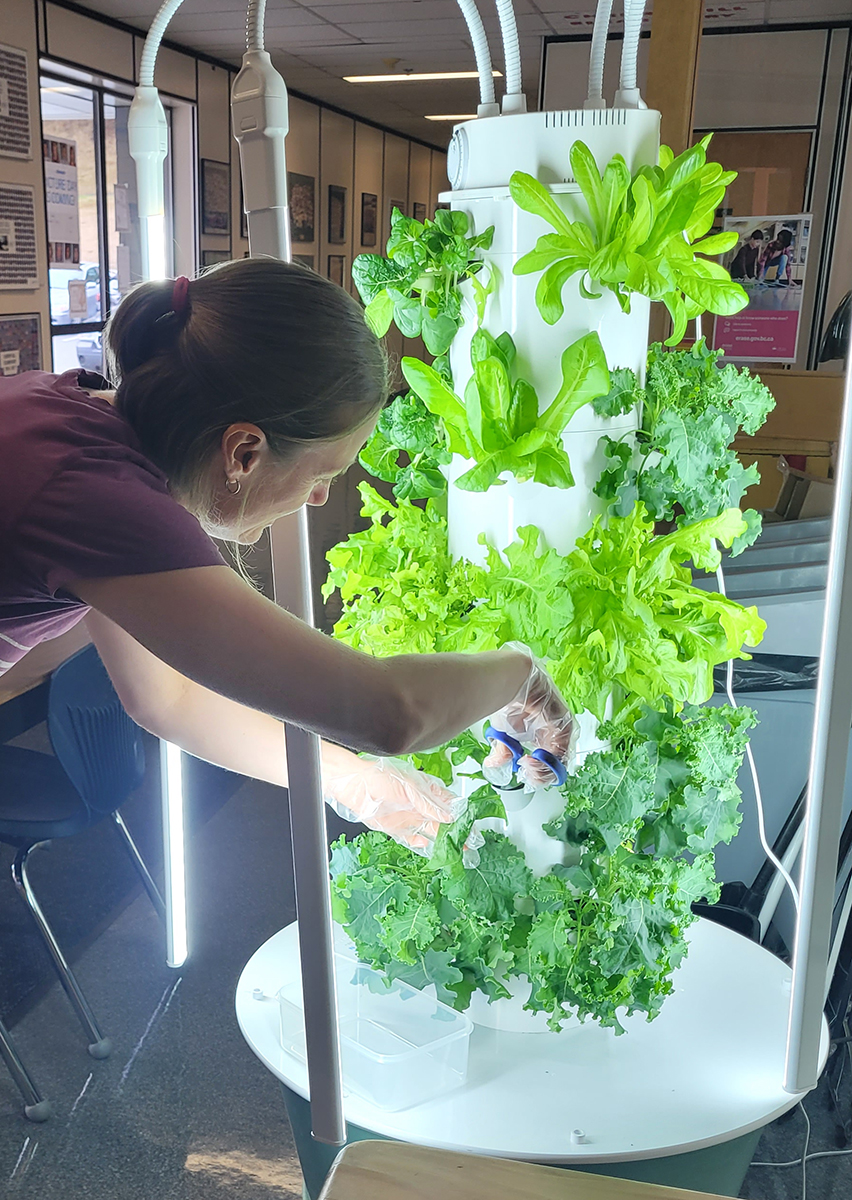
Salad Bar at Cherry Hill Elementary
At the heart of this flourishing program is the much-anticipated Salad Bar Day, where, on average, 55 to 70 students gather to exercise their autonomy in creating personalized salad or veggie plates. This culinary adventure wouldn’t be possible without the invaluable support of our Parent Advisory Council (PAC) and dedicated parent volunteers. Their commitment, evident in the hours spent prepping and serving, is the backbone of our program’s success.
Witnessing the healthy choices our students make during Salad Bar Day is truly inspiring. The autonomy they have in crafting their plates allows for a rainbow of nutritious options, fostering a sense of ownership over their food choices. What’s even more remarkable is the adventurous spirit displayed by the students when trying new and unfamiliar ingredients. The ability to encourage even the most skeptical eaters to partake and discover the joy of healthy eating is a testament to the positive impact of our Farm to School program.
“This is the best salad I have ever had.” – Student
The social aspect of Salad Bar Day adds an extra layer of delight to the experience. The school buzzes with positive energy as students gather to share their creations, creating a sense of community around wholesome, nutritious meals. Salad Bar Day has become a highlight for our students, a day they eagerly anticipate and genuinely love.
Integral to the success of our program are the Garden Club and the prominent Grow Tower, both spearheaded by the dedicated Mrs. Sutherland. As soon as visitors enter our school, the Grow Tower stands front and center, a symbol of our commitment to sustainable agriculture. Mrs. Sutherland, a driving force behind the program, not only runs the Garden Club but also tends to the Grow Tower, nurturing a literal and metaphorical growth within our school community.
“With the way food costs are, it is unaffordable for some families to have fresh produce often. This program has given opportunity to those who may not always have that option and if fills my heart.” – Volunteer
The Grow Tower, an oasis of greenery, provides a bountiful harvest of approximately 6 pounds of greens—over half of what we need for Salad Bar Day. This fall, the carrots and tomatoes harvested from our school garden have enriched the Salad Bar offerings. The sense of accomplishment and connection to their food is visible among students, as they take pride in knowing they actively contributed to growing the vegetables gracing their plates.
Taking sustainability a step further, we’ve implemented a full-circle approach by donating veggie scraps from our prep to local farms. These scraps find a purpose in feeding goats and chickens, reinforcing the intricate cycle that connects our food, animals, and neighbouring farms.
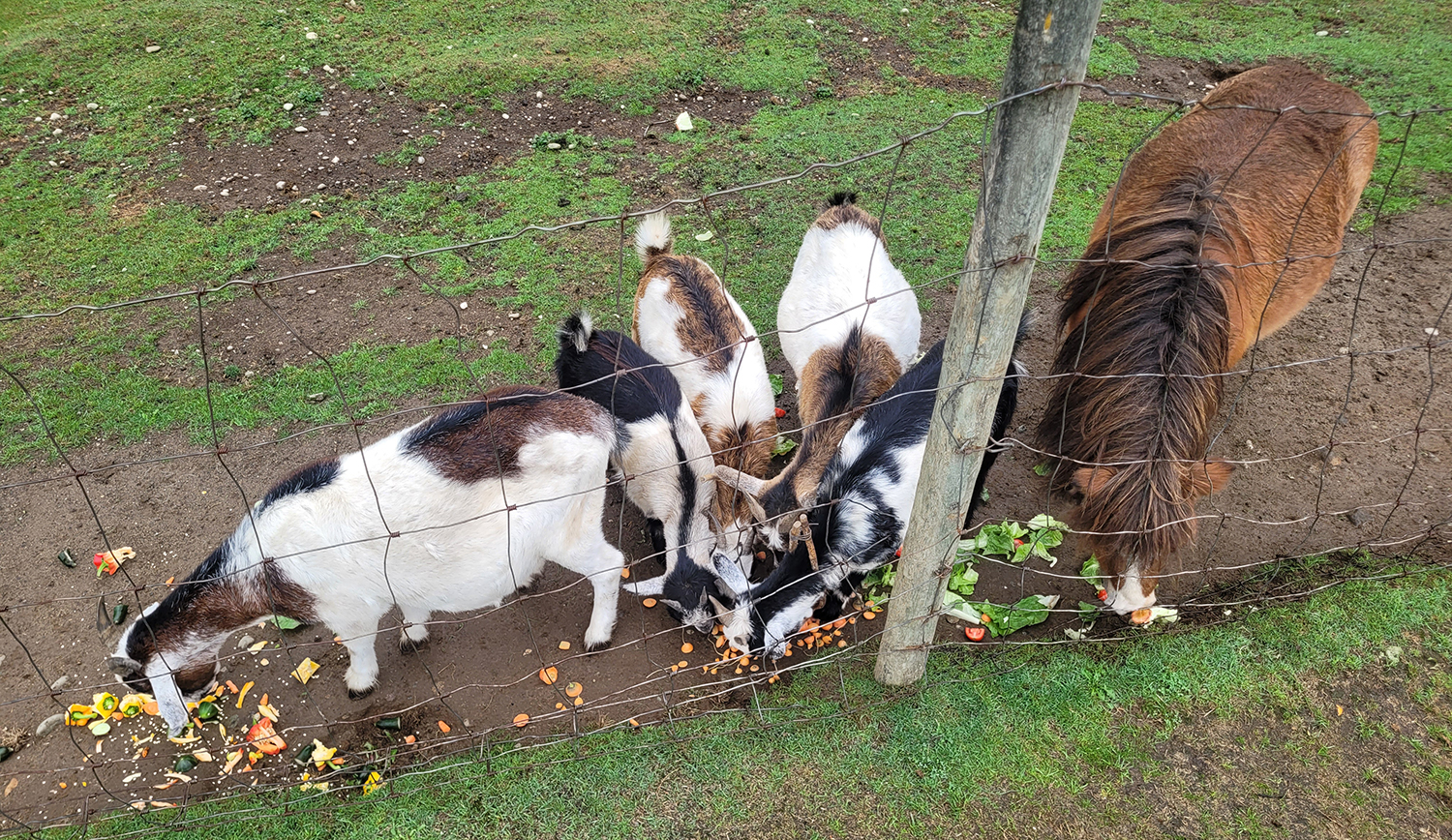
Cherry Hill Elementary School’s Farm to School program is more than just a food program—it’s a transformative journey that has woven a tapestry of healthy choices, community bonding, and sustainability. As we continue to cultivate a love for nutritious eating, the program serves as a shining example of how a holistic approach to food education can sow the seeds of lifelong well-being in our students.
Chili and Bannock

At Cherry Hill Elementary School, where innovation and community spirit flourish, a recent milestone marked the first Chili and Bannock Day as part of our Farm to School program. With a diverse student body of approximately 270, spanning from Kindergarten to Grade 6, the school has entered its second year of running the program, and the success is visible.
In a thoughtful approach to the workload, the school divided its student body, offering the experience to intermediates one week and primaries the next. This strategic decision ensured that every student had the opportunity to indulge in the delicious festivities while ensuring volunteers weren’t overworked.
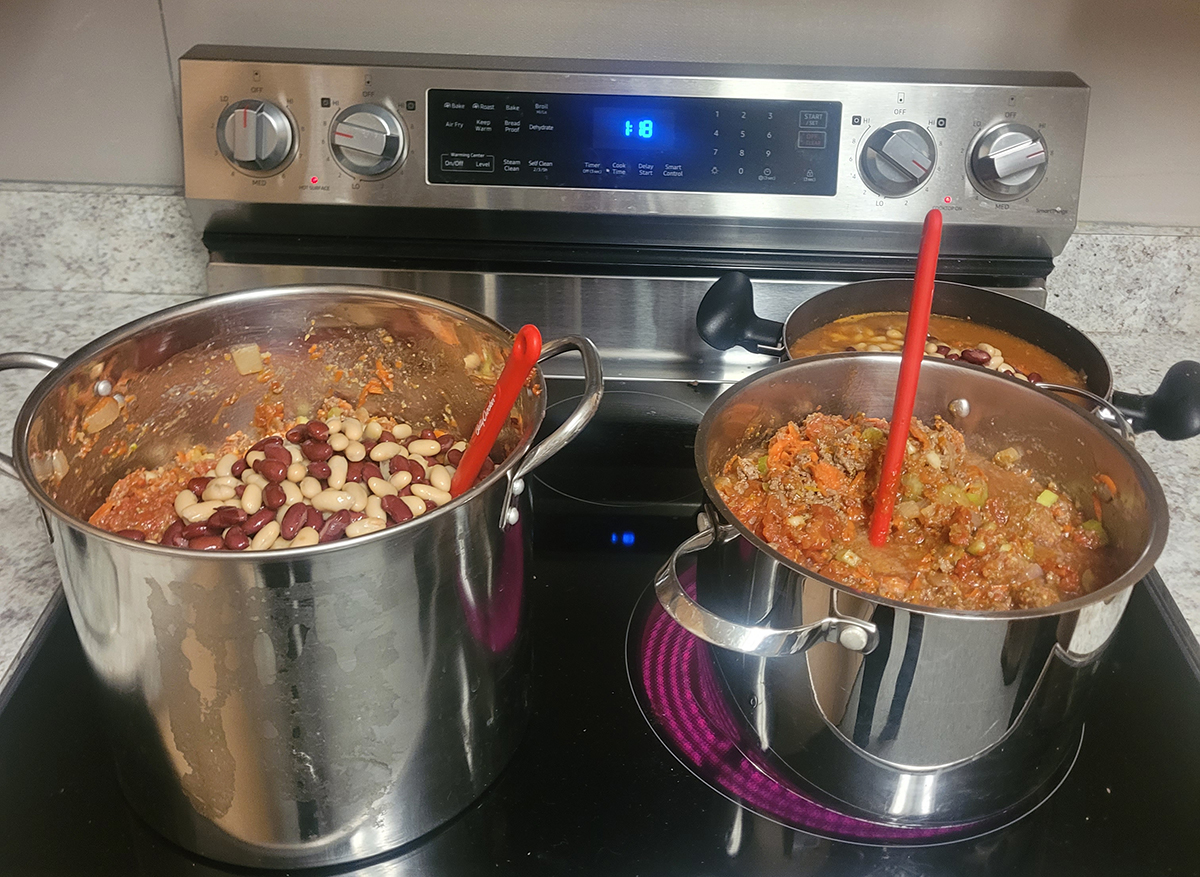 One of the driving forces behind this flavorful adventure was Mr. Stubley, a dedicated Grade 5/6 teacher who took the lead on Bannock making. With the invaluable support of our Indigenous Support Liaison, the dynamic duo spearheaded the efforts to introduce this traditional Indigenous treat to the entire school community. Adding Bannock as an option was not just about expanding our menu; it was a deliberate and meaningful step towards honouring other cultures in our food program.
One of the driving forces behind this flavorful adventure was Mr. Stubley, a dedicated Grade 5/6 teacher who took the lead on Bannock making. With the invaluable support of our Indigenous Support Liaison, the dynamic duo spearheaded the efforts to introduce this traditional Indigenous treat to the entire school community. Adding Bannock as an option was not just about expanding our menu; it was a deliberate and meaningful step towards honouring other cultures in our food program.
This consideration aligns with our school’s commitment to Equity, Diversity, and Inclusion. While the Farm to School program is a small step on a food level, it plays a crucial role in creating an inclusive environment that respects and celebrates the diversity within our community on many levels.
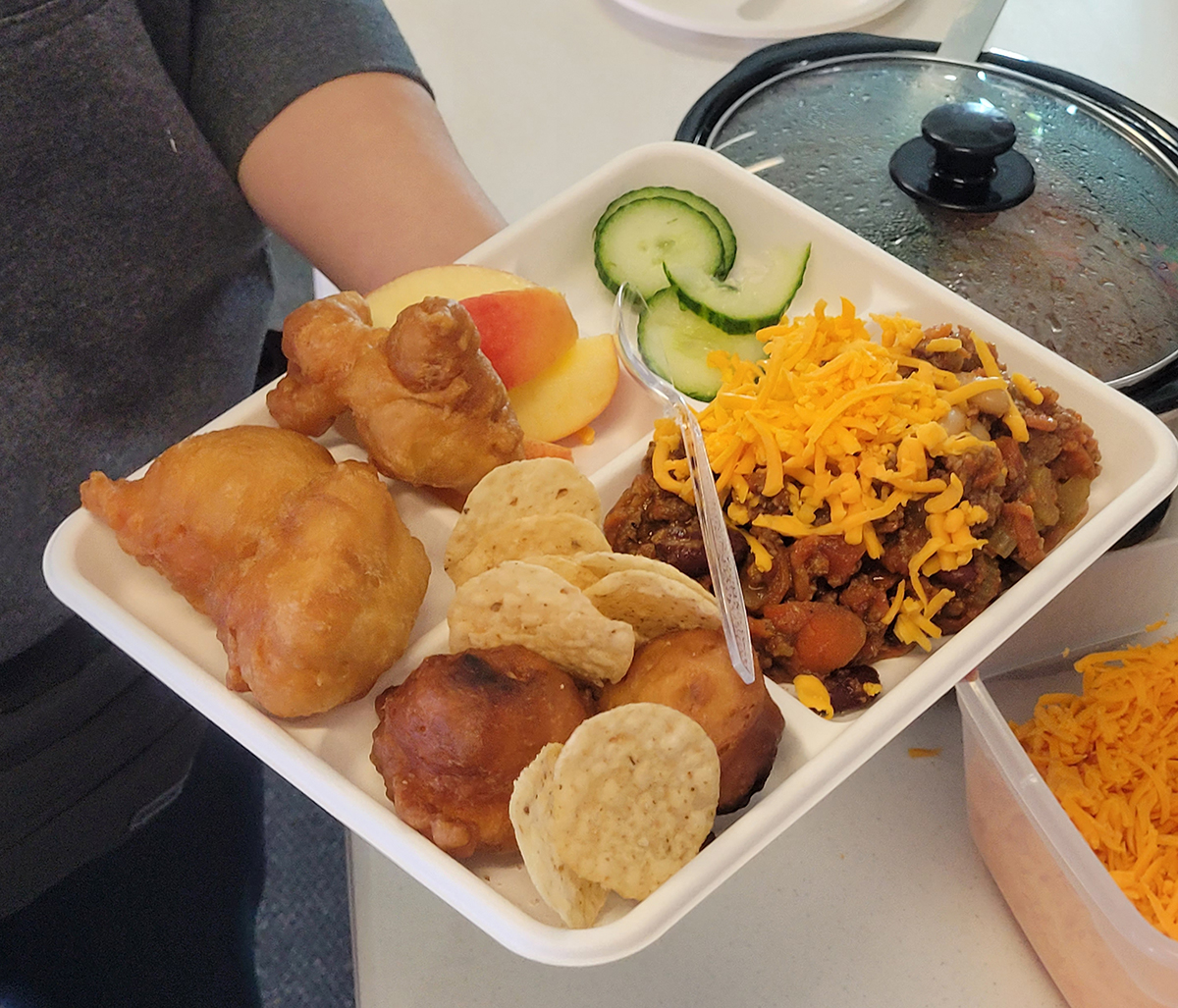
“It is so wonderful to see the variety the students choose and the excitement to try new things.”
The Bannock-making process involved students, staff, and enthusiastic parent volunteers. Grade 5 and 6 students from three different classes took charge, mixing batter and expertly crafting the delicious Bannock. They tirelessly worked to ensure there was enough Bannock for every student in the whole school to try a piece, not just for the lunch program that day. The chatter through the school was a testament to the joy and pride infused into every piece of this traditional delicacy.
Months of meticulous planning and sustainability efforts from the Farm to School program culminated in the creation of the mouthwatering chili. Excess shredded and sliced carrots, along with pureed leftover tomatoes from previous Salad Bar Days some of which came from our very own garden club, led by Mrs. Sutherland, found a new purpose in the hearty chili. The commitment to minimizing waste while maximizing flavour was evident in every bite.
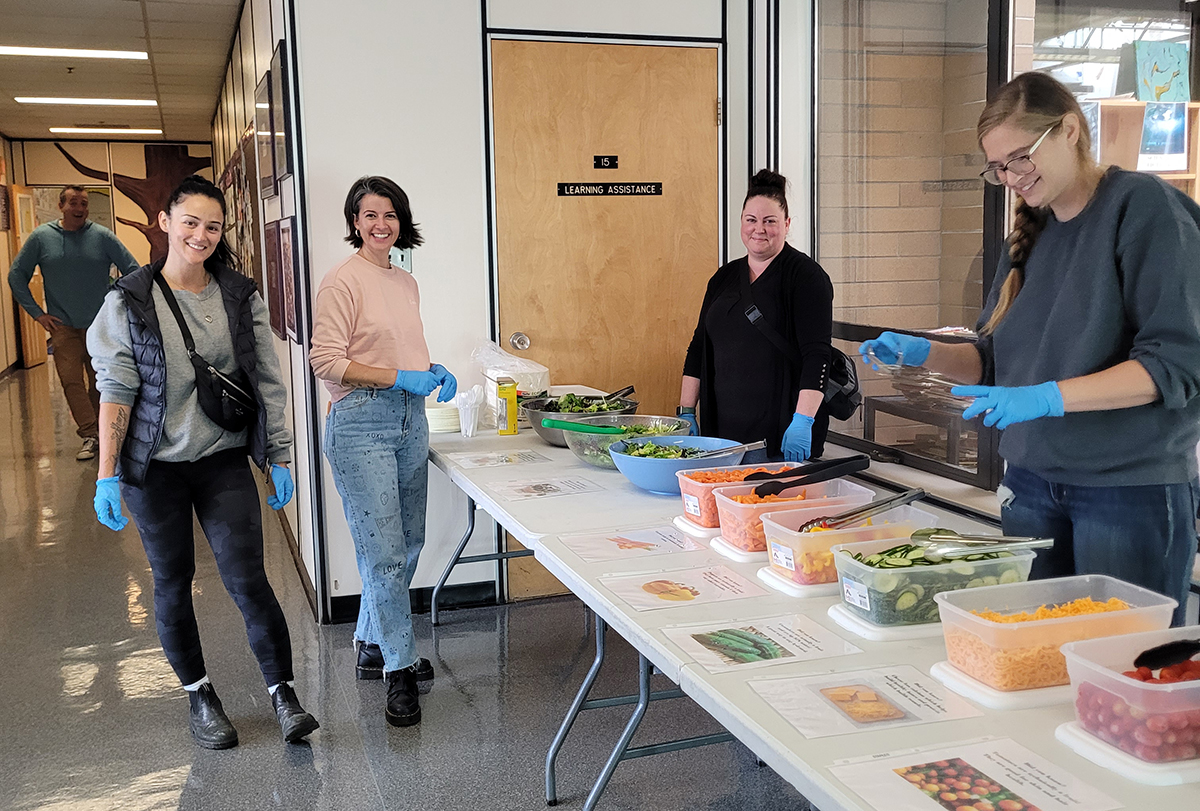 To ensure a smooth and enjoyable experience for all, the school opted for a phased approach, serving the chilli and Bannock on two separate days—once for each half of the student body. The menu featured both a savoury beef chili and a delectable veggie option. Accompanying the main attraction were additional delights such as apple slices, shredded cheese, cucumber slices, and tortilla chips, creating a Chili and Bannock Bar that catered to every palate.
To ensure a smooth and enjoyable experience for all, the school opted for a phased approach, serving the chilli and Bannock on two separate days—once for each half of the student body. The menu featured both a savoury beef chili and a delectable veggie option. Accompanying the main attraction were additional delights such as apple slices, shredded cheese, cucumber slices, and tortilla chips, creating a Chili and Bannock Bar that catered to every palate.
The response was overwhelming, with multiple staff and students declaring it the best chili they had ever tasted. The success of the Chili and Bannock Day extended beyond the culinary realm—it became a unifying experience, fostering a sense of community and pride within Cherry Hill Elementary School.




